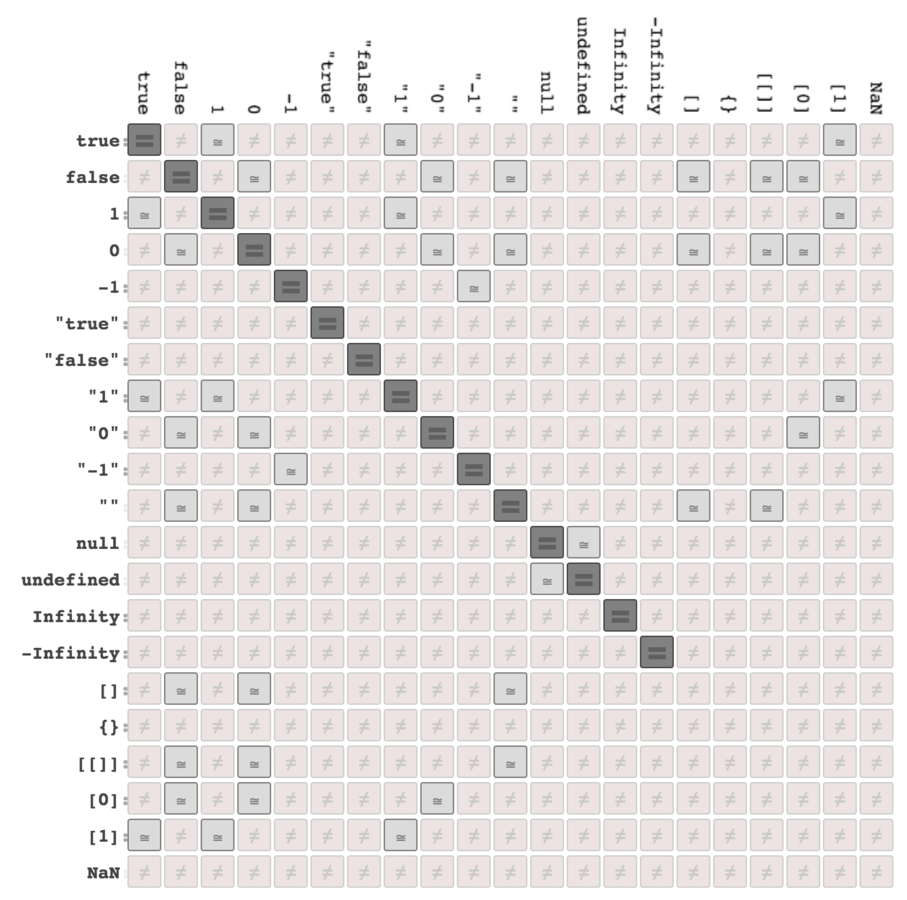Javascript 201
http://attheo.do
Node.js Meetup
Patterns? Hmm?
A design pattern identifies a common software development problem and provides a strategy for dealing with it.
Design Patterns are "Insurance Policies"
Design Patterns are proven to work.
Quantifying their value and how to enforce them
Don't buy "insurance" unless it offers some benefit.
Don't adopt a pattern unless it offers value that you can quantify and articulate to others.
Ask yourself, discuss with the team.
General Patterns
Lubing our way in...
Minimize Globals
Variables used without being explicitly declared with the var keyword
Actually they are not variables, they are properties of the global object.
Shared among all javascript code and increase probability of naming collisions.
Be a good "neighbour" in your neighbourhood
Minimize Globals
function() {
var a = b = 0;
}
// same as ...
function() {
var a = (b = 0);
}
function zeroFill(x, y) {
angular = x >>> 2;
return angular;
}
b leaks as a global property
Single 'var' Pattern
function lala() {
var koko = 1
, mama = 2
, kaka = 3
, obj = {
tsoutsou: loulou
}
, mpe = 'mpou';
// implementation [...]
}
Single 'var' Pattern
A single place to look for all local variables used in the function.
Prevents logical errors when a var is used before it's defined.
Helps you remember to declare variables and therefore minimize globals
Less code to type :)
Please cache your for loops
for (var i = 0; i < anArray.length; i++) {
console.log(anArray[i]);
}.length is accessed .length times
for (var i = 0, max = anArray.length; i < max; i++) {
console.log(anArray[i]);
}.length is cached!
Avoid Implied Typecasting
Javascript implicitly typecasts variables when you compare them
var flag = 0;
if (flag === false) {
// I refuse to execute bro..
}Avoid Implied Typecasting

Functions are Objects
var add = new Function('a, b', 'return a + b');
add(10, 10) // returns 20
Function Declaration Patterns
// Function Declaration
function add(a, b) {
return a + b;
}Usually, we don't do that.
Function Declaration Patterns
// Function Expression
// a.k.a anonymous function
var add = function (a, b) {
return a + b;
};+ Intuitive: "function as an object"
+ Enforces good semicolon habits.
Function Declaration Patterns
// Named Function Expression
var add = function add(a, b) {
return a + b;
};+ Debugger has explicit function name (stack trace)
+ Allows recursive functions: add can call itself
- Can break IE.
- Coffescript doesn't do it
Object Literals
// BAD
var o = new Object();
var a = new Array();
var s = new String();
var n = new Number();
var b = new Boolean();
// GOOD
var o = {};
var a = [];
var s = "";
var n = 0;
var b = false;
Function Patterns
Shit got real.
Callback Pattern
When you pass function A to function B as parameter
(function A is called a Callback)
Callback Pattern
function readHugeData(callback) {
fs.readFile(pathToFile, function (err, data) {
var bufferString = data.toString();
callback(bufferString);
});
}
// callback function
function logData(buffer) {
console.log(buffer);
}
readHugeData(logData);Arguments Control
Cause I don't want to remember your function signatures
Arguments Control
// BAD
function addPerson(firstName, lastName, age, location, address) {
doShit();
}
addPerson('Thanos', 'Theodoridis', 30, 'Thessaloniki', 'Kapou 10');
// GOOD
var person = {
firstName: 'Thanos',
lastName: 'Theodoridis',
age: 30,
location: 'Thessaloniki',
address: 'Kapou 10'
};
function addPerson(person) {
doShit();
}
addPerson(person);
Returning Functions
Returning functions "remember" their environment plus they don't expose "private" vars
Returning Functions (Closures)
var counter = function() {
var count = 0;
return function() {
return ++count;
}
}
var increment = counter();
increment(); // returns 1
increment(); // returns 2
increment(); // returns 3
+ Closures encapsulate their environment (scope)
- Which is why you should be careful when creating closures in loops
Partially Applied Functions
Provide a number of arguments to a function, producing another function of smaller arity.
Partially Applied Functions
var add = function add(a, b) {
return a + b;
};
// partially apply this function with "a"
// set to 1
var partial = add.bind(null, 1);
// complete the function application by also
// providing "b"
partial(2); // returns 3IIFE
Execute function as soon as its defined
IIFE
(function () {
console.log('Bootstrap');
}());+ Provides a scope sandbox.
+ Helps prevent variables and function declaration make it to global scope
Memoization Pattern
Functions are objects, objects have properties. Use them to speed computations.
Memoization
var doSomething = function(param) {
if(!doSomething.cache[param]){
var result = {};
// ... computation heavy operation
doSomething.cache[param] = result;
}
return doSomething.cache[param];
};
doSomething.cache = {};Object Creation Patterns
Paving the road to Object Oriented Javascript
Access Control
How to enforce private, protected and public properties/methods
Private Members ~> Closures
function Pet() {
//private member
var type = 'dog';
// public getter
this.getType = function() {
return type;
};
};
var indefix = new Pet();
console.log(indefix.type); // undefined
console.log(indefix.getType()); // "dog"Private Members
Are we done yet?
Private Members
function Pet() {
// private member (?)
var petDetails = {
type: 'dog',
age: 20,
color: 'black'
};
// public getter
this.getPetDetails = {
return petDetails;
};
}Passed by reference!!!
Access control & Object Literals
var myObject = (function (){
// private properties
var name = 'Thanos';
// public getter
return {
getName: function() {
return name;
}
}
}());IIFE + Returning Functions!

Prototypes & Privacy
function Pet(){
// private member
var type = 'dog';
// public function
this.getType = function() {
return type;
};
}
Pet.prototype = (function () {
// private member
var food = 'Royal Canine';
// public prototype member
return {
getFavFood: function() {
return food;
}
};
}());
var indefix = new Pet();
console.log(indefix.getType()); // privileged "owned" method
console.log(indefix.getFood()); // privileged prototype method Private & Public Static Members
Static shit:
Those that don't change from one instance to another.
Used without having to create an instance of the "class".
Public Static Members
// constructor
var Pet = function() {};
// static method
Pet.isFriendly = function(){
return false;
};
// normal method
Pet.prototype.feed = function() {
this.hungry = false;
};
// call static method
Pet.isFriendly(); // false
var indefix = new Pet();
indefix.feed();Static Methods working with instances?
Pet.prototype.isFriendly = Pet.isFriendly;
pet.isFriendly(); // falseWARNING: Be careful when you use `this` inside the static method.
Private Static Members
Shared by all the objects created by the same constructor function
Not accessible outside the constructor
Private Static Members
var Item = (function() {
//static variable
var itemId = 0;
// the new constructor implementation
var NewItem = function() {
++itemId;
};
NewItem.prototype.getItemId = function() {
return itemId;
};
return NewItem;
}());
var iPhone = new Item();
iPhone.getItemId(); // 1
var macbookPro = new Item();
macbookPro.getItemId(); // 2BONUS!
The Chaining Pattern!
Enables you to call methods on an object one after the other
The Chaining Pattern
var obj = {
value: 1,
increment: function() {
++this.value;
return this;
},
add: function(a) {
this.value += a;
return this;
},
log: function() {
console.log(this.value);
}
};
obj.increment().add(10).log(); // 12
// VS
obj.increment();
obj.add(10);
obj.log();Thanks!

Copy of Javascript 102
By ibraimsap
Copy of Javascript 102
- 344



